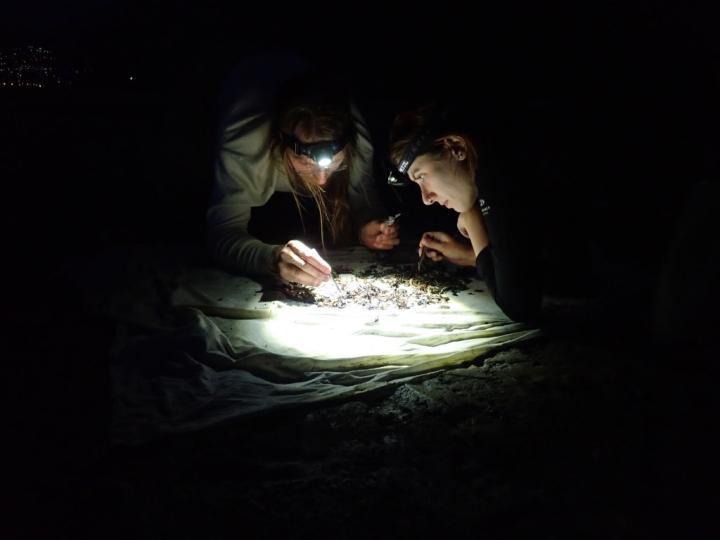
Counting insects is part of the job. Credit: Gabriel Singer/IGB
Bright lights in certain areas may be driving the flying insect population down, ultimately resulting in changes in the natural ecosystem.
A team from the Leibniz-Institute of Freshwater Ecology and Inland Fisheries (IGB) have discovered that regions that have experienced a sharp decline in flying insects are plagued by high levels of light pollution.
A 2017 study analyzing trends in the biomass of flying insects in selected protected areas within agricultural landscapes shows that the biomass of flying insects has decreased by more than 75 percent in the last 27 years.
The study concluded that changes in climate and habitat likely caused the decline in insect population. However, these impacts alone are unable to explain the drastic decline.
The researchers sought out to expand the 2017 study by looking at the locations involved in the study that were areas in extended urban areas that have a higher than average level of light pollution.
“Half of all insect species are nocturnal,” Maja Grubisic of IGB, said in a statement. “As such, they depend on darkness and natural light from the moon and stars for orientation and movement or to escape from predators, and to go about their nightly tasks of seeking food and reproducing. An artificially lit night disturbs this natural behavior and has a negative impact on their chances of survival.”
The researchers analyzed several recent studies on the impact of artificial light at night on insects and discovered evidence that suggests a link between light pollution and declines in insect populations.
For example, flying insects are attracted to artificial lights, removing them from other ecosystems. This often causes the insects to die from exhaustion or fall victim to predators. Rows of light also prevent the insects from spreading, causing a lack of genetic exchange within fragmented insect populations that could reduce their resistance to other negative environmental influences, particularly in pronounced agrarian areas.
Declining insect populations in agricultural areas mean both a decline in species diversity and a reduction of important ecosystem services such as plant pollination.
Changes in the occurrence and behavior of pests like aphids, beetles and spiders, can also disturb the balance of the ecosystem.
The researchers also found that artificial light at night has a direct impact on the growth and flowering time of plants, ultimately affecting the overall yield.
“Our overview study shows that artificial light at night is widely present and can have complex impacts in agricultural areas, with unknown consequences for biodiversity and crop production,” Franz Hoelker, PhD, head of the Light Pollution and Ecophysiology research group at IGB, said in a statement. “Thus, light pollution should be generally considered as a potential ecosystem disturbance in future studies to identify ways in which practical steps can be taken to reduce environmental concerns.”
The study was published in the Annals of Applied Biology.




